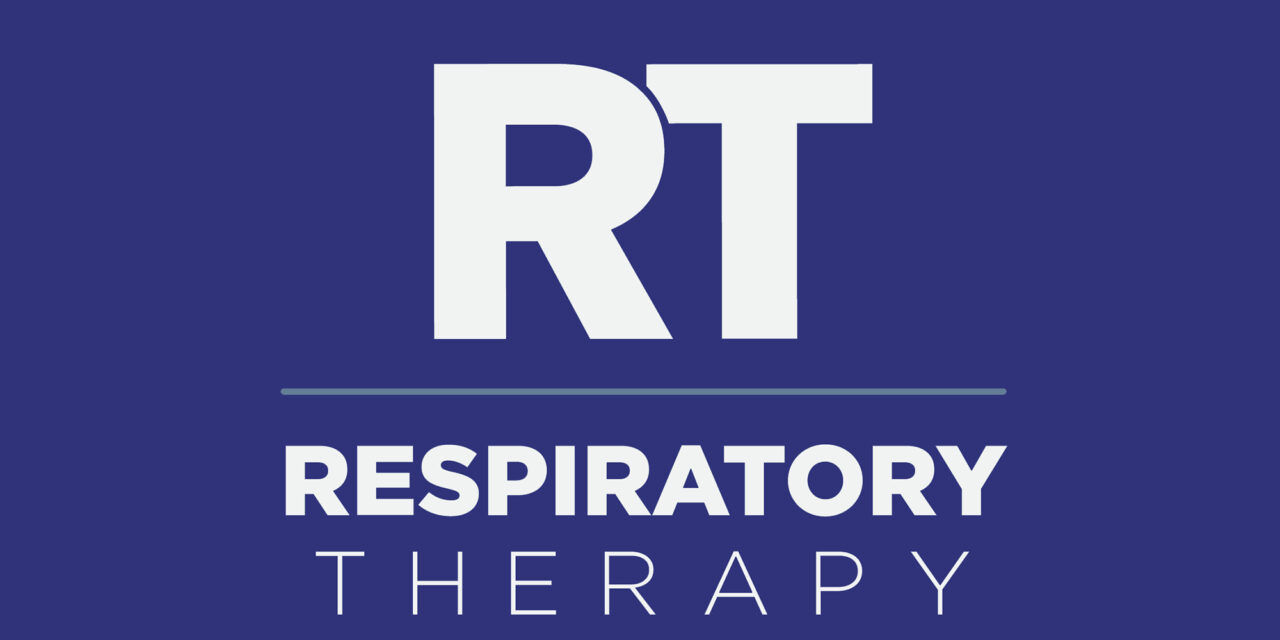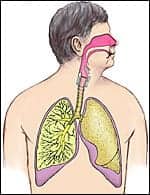University of California San Francisco Medical Center’s Respiratory Care Service rises above the rest through a unique management method, outreach and education, and research.
By Liz Finch
University of California San Francisco (UCSF) Medical Center is well recognized as a center for medical excellency. For 2 years running, UCSF has been named one of the country’s 10 best hospitals by US News & World Report, and this year it was called one of the three best hospitals in California as well. UCSF Medical Center is the only nationally designated comprehensive cancer center in Northern California and is nationally recognized for research and therapy in many specialties including bone marrow and organ transplantation, acute respiratory distress syndrome (ARDS), asthma, fetal surgery, and pediatric cardiac surgery.
This commitment to excellence has meant great things for the facility’s Respiratory Care Service (RCS). According to Julio Barba, RRT, manager of RCS and of Clinical Engineering, the center takes many opportunities to position its RCPs outside their traditional department role and scope. The result is a facility that places a high degree of trust in its RCPs throughout the continuum of care—from patient management to research studies to handling supervisory duties across departments.
Respiratory Care Service
UCSF Medical Center is located on the 107-acre university’s Parnassus Heights campus but also encompasses several major sites in San Francisco, which includes 11 research institutes and 1,500 laboratories. The RCS is located within the 15-story, 560-bed Moffitt-Long Hospitals, and serves medical and surgical patients of all ages in the emergency department (ED), on the acute care floors, and seven critical care units.
RCS staff consists of 76 RCPs, including 56 RRTs and 20 who are RRT-eligible, four supervisors, two administrative assistants, and 10 blood gas laboratory technicians who work in two blood gas laboratories, analyzing more than 60,000 specimens per year. On an average day, the entire RCS staff manages 40 mechanically ventilated patients and administers about 80 intermittent treatments.
Staff members are assigned to either the pediatric or adult RCS division. The pediatric RCS consists of a pediatric and a neonatal team. The pediatric RCS operates under the Children’s Hospital at UCSF and employs 30 RCPs to staff the intensive care nursery, as well as two pediatric intensive care units (PICUs) and pediatric acute care floors. The PICUs provide care to a wide range of critically ill children and postoperative ventilatory support to pediatric cardiac surgical patients. The pediatric respiratory care team also is active in asthma and cystic fibrosis patient care and education. In addition to providing the full range of respiratory care services, an RCP on the pediatric team supports the pediatric pulmonary function laboratory by performing pulmonary function tests, sleep studies, and bronchoscopy assistance.
RCPs assigned to the intensive care nursery provide care to an average of 14 mechanically ventilated patients each day. Infant respiratory distress syndrome, diaphragmatic hernias, and various congenital anomalies are commonly managed in the intensive care nursery unit where treatments include surfactant replacement therapy, nitric oxide, helium, and high-frequency oscillatory ventilation.
The adult RCS supports the largest geographic area of the facility covering the ED, seven acute care floors, four ICUs, three transitional care units, and a 37-bed postanesthesia care unit. Adult respiratory care team members manage an average of 16 mechanically ventilated patients each day following a variety of therapeutic or research protocols. Two adult team RCPs are key staff members of the recently accredited amyotrophic lateral sclerosis (ALS) Center at UCSF. They assess ALS patients, track their pulmonary function performance, and provide expert technical support and advice regarding mechanical ventilatory support options.
“The RCS also has a staff of two full-time biomedical equipment technicians who provide maintenance and repair on our fleet of 90 ventilators and other equipment,” says Barba, who came to UCSF after working for both Stanford University Medical Center and Mount Zion Medical Center in San Francisco. He is responsible for the basic management functions of both the RCS and Clinical Engineering Departments including budgeting, planning, staffing, scheduling, developing services, and coordinating operations.
“By managing both departments, we now have more consistent policies and are better able to coordinate, manage, and utilize medical equipment throughout the medical center,” Barba says. “Equipment data control and managing device failures and recalls have significantly improved as a result of merged management. Now we have a much more comprehensive view of what is going on with medical devices and preventive maintenance schedules.”
A Unique Management Method
Another benefit to the entire medical center comes in the unique management structure of RCS. The pediatric and adult RCS divisions are separately budgeted cost centers with different administrative reporting relationships. However, despite that administrative and fiscal complexity, both divisions seamlessly share staff and material resources and all staff members are required to maintain competencies in all clinical areas.
“Starting in the mid 1990s, we were facing a very large managed care contracting basis for reimbursement here, and there were very aggressive cost-reduction initiatives,” Barba says. “We radically altered the structure of our department and reduced our management staff from 13 to five. At the same time, we reorganized the department on patient care service lines or teams.”
Today, the adult, pediatric, and neonatal teams are each led by a supervisor charged with meeting the commitments and needs of their individual service areas. The supervisors are in charge of the overall service line, which means they interface with physicians, nurses, and other staff members to meet the needs of a particular service area.
Each supervisor is assisted by a number of advanced level practitioners who function as team leaders and clinical resources. Although expectations are higher for clinical team leaders, staff at all levels participate in research, education, quality improvement, and other special projects.
“We are taking many opportunities to position the RCPs here outside the traditional department scope,” Barba says. “We have recognized that RCPs function as excellent clinical research coordinators.”
Outreach and Education
Working across disciplines occurs at many levels at UCSF Medical Center, which has traditionally been a major referral center for the most complex care in many medical and surgical specialties. Within RCS, supporting referral sites is a high priority for the perinatal services, and staff regularly participates in outreach education programs designed to improve the assessment and care skills of personnel at about five Northern California hospitals.
“In neonatal service, there are several hospitals that refer their high-risk infants to us and these arrangements have been in place for a long time,” Barba says. “In a sense, providing outreach education is really in our own best interest. To the extent that other hospital staff members’ knowledge, skills, and ability to manage these high-risk infants is improved, the patient will get to us in better condition and make our job easier.
“We do fairly extensive outreach with nursing, medical staff, and RCPs. Our RCPs visit these facilities on a regular basis, review their infant ventilation concepts, and review the technology at each facility,” he says.
More advanced training is provided on site where neonatal RCPs facilitate preceptorships to expose RCPs working in relatively lower-acuity nurseries to the intensity and challenges of the level III ICN environment.
“The preceptorships give therapists who will be taking care of infants at outlying facilities the chance to come to UCSF and work side-by-side with one of our therapists,” he says. “Here they can observe a higher level of care, acuity, and intensity than they will ever see in their own facility.”
UCSF’s RCS also provides support for the adult pulmonary laboratory at the nearby Mount Zion facility. That hospital was closed several years ago to inpatient activity, but has since reopened on a limited basis. It is the current site of UCSF’s comprehensive cancer center, and houses a pulmonary laboratory as well.
In addition, RCS is affiliated with the Skyline College Respiratory Care Program and has two program faculty members among the staff. The UCSF facility serves as a clinical education site to the program. In addition to supporting respiratory care education, RCS staff members serve as faculty in medical and nursing education programs and facilitate weekly respiratory care rounds for critical care residents and fellows.
Research
The entire facility has more than 2,000 ongoing research projects, making UCSF one of the nation’s premier health sciences teaching, training, and research centers. RCS benefits in particular from UCSF’s participation as one of only six clinical centers involved in the Asthma Clinical Research Network, established in 1993 by the Division of Lung Diseases, National Heart, Lung, and Blood Institute.
“We have become deeply involved in research on a number of fronts,” Barba says. “We have two staff therapists who are paid clinical research coordinators, and another therapist is employed part-time doing work for a pharmaceutical research project.
In the intensive care nursery, RCPs are working with a research multicenter study of whether a low dose of nitric oxide will reduce chronic lung disease in preterm infants who would otherwise require mechanical ventilation. The pediatric respiratory care team is participating in a multi-center study of prone positioning of mechanically ventilated pediatric ARDS and acute lung injury patients. “Recent studies on adults suggest that prone positioning does not affect outcome, but it will be interesting to see if this patient population responds differently,” Barba says.
“We also are undergoing a study on the effect of prone positioning in acute lung injury and ARDS in a pediatric population,” Barba says. “There have been studies on adults that show it does not make a difference on the outcome, but it would be interesting if this patient population is going to be different in that sense.”
In the adult segment, two team members serve as research coordinators for ongoing National Institutes of Health ARDS Clinical Network (ARDSnet) research on mechanical ventilation strategies for ARDS/acute lung injury (ALI) patients. Their participation in this research has enabled the department to quickly integrate as standard practice lung protective ventilation strategies proven to decrease mortality in ARDS/ALI patients.
The Future of UCSF
In addition to constantly updating the latest in therapy, UCSF’s RCS tries to maintain the latest in technology, although Barba notes that “in terms of university medical centers, we are behind the curve in computerization.
“Our supply management systems are increasingly automated, but the RCS does not have a comprehensive data management solution. Nevertheless, our network infrastructure has developed over the last few years and that is improving our technology options,” he says.
Among the other recent changes was the addition of a new acute care clinical coordinator position that will address some of the challenges in the acute care environment.
“Through many financial challenges we’ve faced over the decades, our strategy was to focus on our area of strength, which has always been critical care,” he says. “That served us well, but we are not where we want to be in terms of the level of services we are providing on the acute care floors.”
Over the past few years, Barba notes that there has been an increase in higher acuity patients with more complex care needs on the acute care floors. As a consequence, providing excellent care to these patients has become increasingly challenging. The acute care coordinator will be able to help the department focus on how to best meet patient care and interdisciplinary communication and education needs, according to Barba.
“With increasing complexity of acute care, it has become more difficult to assure the efforts of all disciplines are complementary rather than contradictory,” Barba says. “We are working with nursing and medical staff to define the appropriate level of care for patients using different levels of noninvasive ventilatory support and we’re improving our protocols for lung expansion therapy, bronchodilator therapy, and secretion clearance.
“Overall, we want to assure that those who move from critical to acute care do not fall through the cracks, and therefore need to be returned to the ICU,” Barba says. “We want to help bridge the transitions and strengthen the continuity of care. That is our goal within RCS, and UCSF as a whole.”
RT
Liz Finch is a contributing writer for RT Magazine. For more information, contact [email protected].










